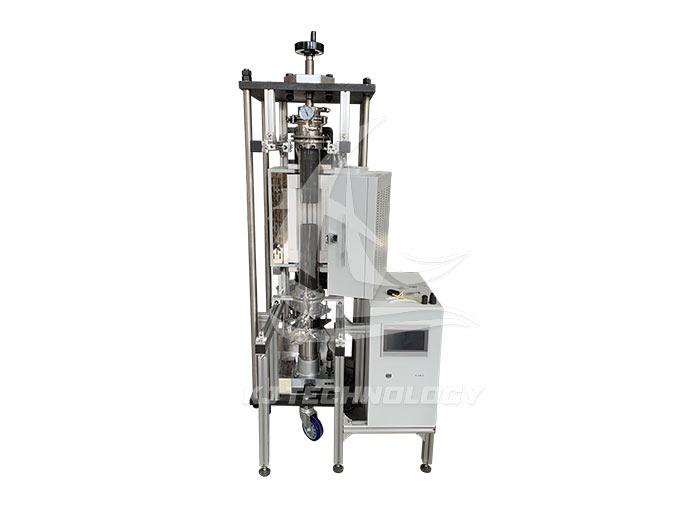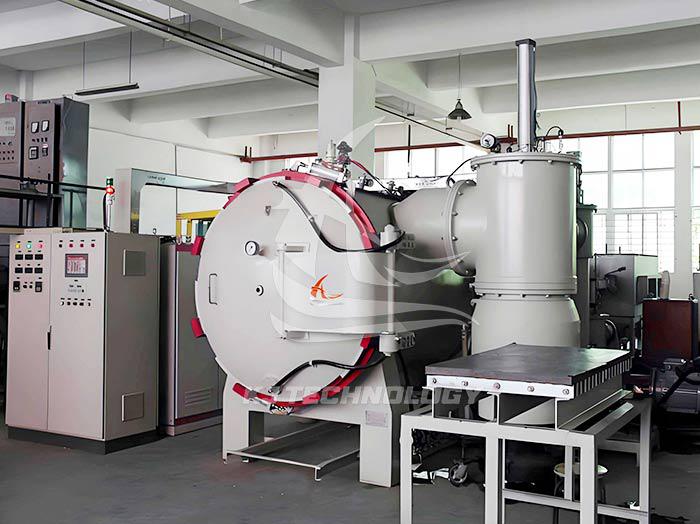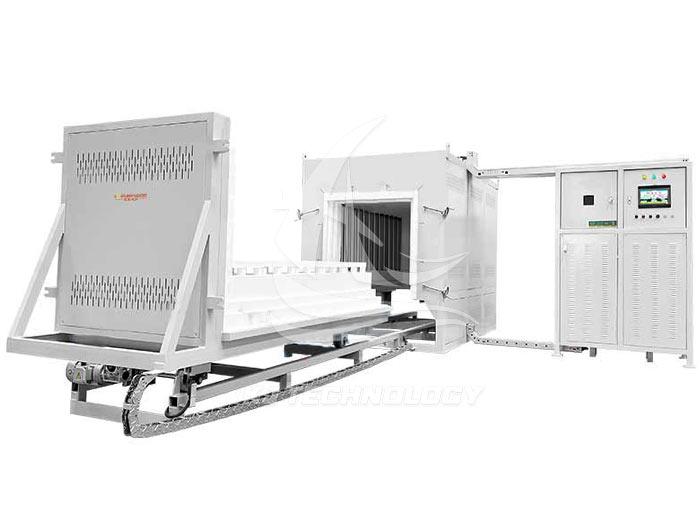How to choose the size of the graphite vacuum furnace chamber for laboratory use?
 07-22-2025 Author: KJ technology
07-22-2025 Author: KJ technology
The selection of furnace size for laboratory graphite vacuum furnaces should comprehensively consider sample characteristics, experimental types, process requirements, equipment costs, and operational convenience to ensure experimental efficiency, temperature uniformity, and equipment utilization.
1. Determine the basic dimensions based on the characteristics of the sample
Sample size and shape
Length, width, and height restrictions: The effective space of the furnace must be larger than the maximum size of the sample, and an operating gap should be reserved (usually 10-20mm reserved on one side).
Example: If the sample is a block material of 150mm × 100mm × 50mm, the furnace size is recommended to be ≥ 180mm × 130mm × 80mm.
Alien samples, such as tubes, fiber bundles, etc., need to calculate the occupied space based on the actual placement method (such as laying flat or hanging).
Example: Carbon fiber bundles (diameter 20mm, length 300mm) need to be selected in a vertical furnace with a height of ≥ 350mm.
Sample quantity and batch processing
Single experiment quantity: If multiple samples need to be processed simultaneously (such as batch annealing), the total occupied volume needs to be calculated.
Example: Process 20 circular discs with a diameter of 50mm × 10mm, with a furnace diameter of ≥ 150mm and a height of ≥ 50mm (considering stacking placement).
Process compatibility: Avoid uneven heat conduction caused by too small sample spacing (recommended spacing ≥ 10mm).
2. Match experimental types with process requirements
High temperature experiment (>1600 ℃)
Thermal expansion reserve: Graphite has an expansion rate of about 1% at high temperatures (at 2000 ℃), and the furnace design needs to reserve expansion space.
Example: For a furnace with a rated temperature of 2200 ℃, the actual usable size should be 5-10mm smaller than the nominal value.
Temperature uniformity: For large-sized furnaces, the layout of heating elements needs to be optimized (such as dual zone heating) to ensure a temperature difference of ≤± 5 ℃.
Vacuum process requirements
High vacuum environment: The inner wall of the furnace should be smooth (Ra ≤ 0.8 μ m) to reduce gas adsorption and release.
Example: For annealing semiconductor materials, a furnace with polished inner walls should be selected, and the ultimate vacuum degree can reach 10 ⁻⁶ Pa.
Inflatable protection: If inert gas (such as argon) protection is required, the furnace should be designed with a gas distributor to ensure uniform airflow.
Special Process Additional Space
Hot pressing sintering: It is necessary to reserve space for the movement of the pressure head (usually increasing the height by 30-50%).
Example: For a 20T pressure hot press furnace, the furnace height must be ≥ 250mm (including the pressure head stroke).
Rapid cooling: Gas flow channels need to be designed in air-cooled furnaces to enhance convective heat transfer efficiency.
3. Balancing equipment costs and utilization rates
Relationship between size and price
For every 20% increase in furnace size, equipment costs may increase by 30-50% (due to increased heating power and vacuum system capacity).
Example: The price of a vacuum furnace with a diameter of 200mm × 300mm is approximately 1.8 times that of the model with a diameter of 150mm × 200mm.
Laboratory space limitations
When the length of the horizontal furnace exceeds 1m, equipment handling and installation space should be considered (it is recommended to reserve 0.5m of operating channel).
When the height of a vertical furnace exceeds 2 meters, a lifting platform or hoisting equipment should be installed.
Multi purpose compatibility
Choosing a modular furnace design can adapt to samples of different sizes by replacing the furnace lining or partition.
Example: A certain model of vacuum furnace is equipped with a detachable graphite sleeve, which can expand the effective diameter from 100mm to 150mm.
4. Summary of Selection Steps
Measure the sample: Record the maximum size, quantity, and placement method.
Determine the process: specify the temperature range, vacuum degree, and whether hot pressing/rapid cooling is required.
Reserved space: Calculate theoretical dimensions based on thermal expansion and operational clearance.
Compare devices: Choose a model with matching size and reasonable cost (prioritize manufacturers that support customization).
Verify compatibility: Require the manufacturer to provide a temperature uniformity test report (e.g. ± 3 ℃ @ 1600 ℃).
5. Precautions
Avoid excessive design: Large furnaces have high energy consumption and slow heating in low-temperature experiments (such as a furnace with a diameter of 300mm that takes 2 hours to heat up to 1000 ℃, while a furnace with a diameter of 150mm only takes 1 hour).
Pay attention to furnace material: High purity isostatic pressed graphite (density ≥ 1.85g/cm ³) has a lifespan 2-3 times that of extruded graphite, but is more expensive.
Reserve upgrade space: If it is possible to handle larger samples in the future, an expandable furnace design can be chosen (such as increasing the number of lining layers).








